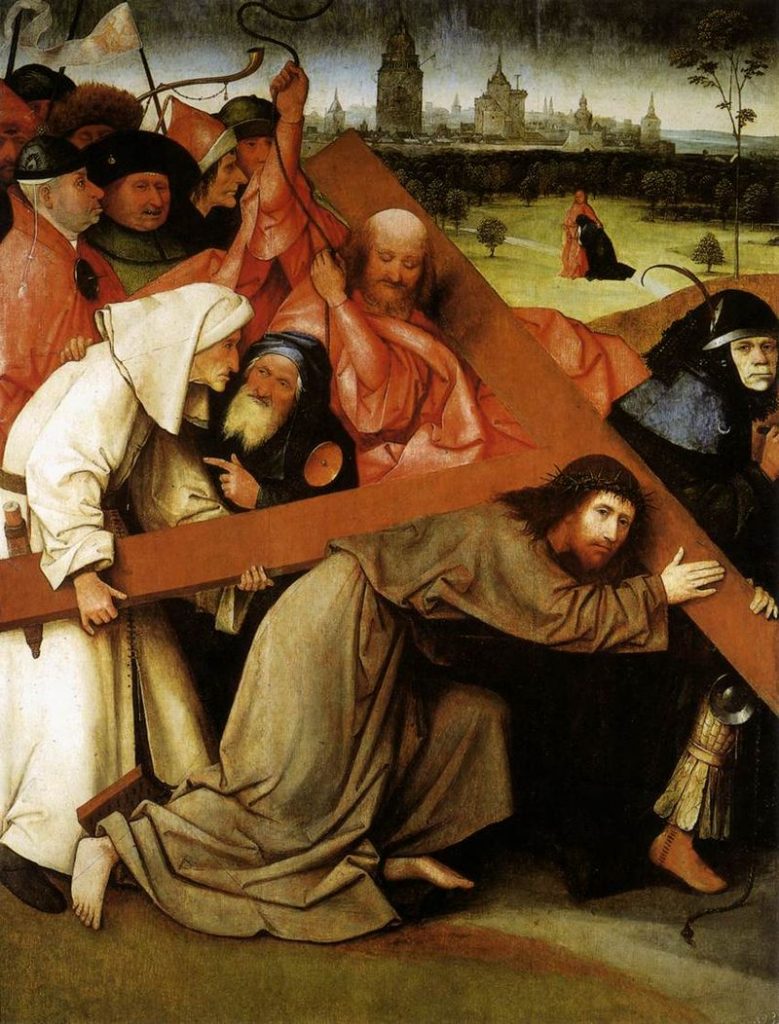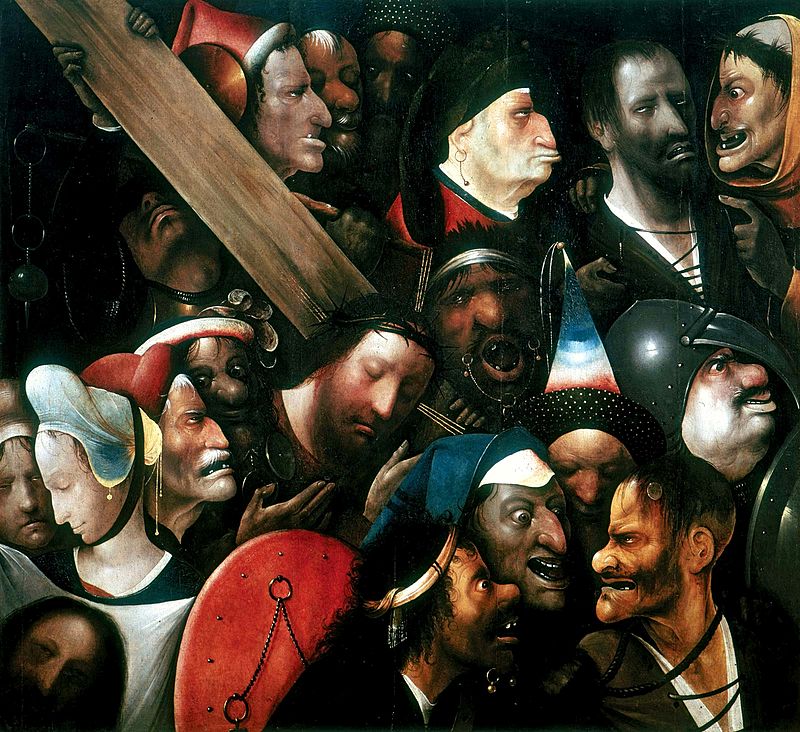Plan
- Presentation of Hieronymus Bosch and his artworks
- Elements presents in his paintings
- After Hieronymus Bosch
- Conclusion
Presentation of Hieronymus Bosch and his artworks
Who is Hieronymus Bosch ?
Hieronymus Bosch (his real name is Hieronymus Van Aken) is born in the town of Den Bosch in Netherlands in 1450 and died in August 1516. He was a drawer and a painter of the early Netherlandish Renaissance. He had an important workshop with many young artists.
His main artworks
The Garden of Earthly Delights is a triptych painted between 1503-1504. The painting is an oil on wood which is located in the museum Prado in Madrid.
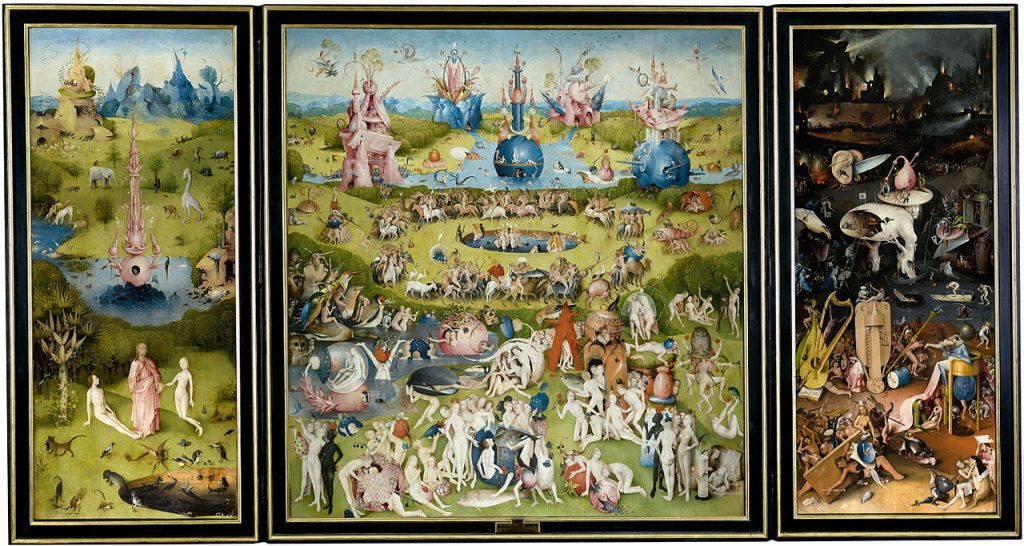
The Last Judgement is also a triptych and an oil on wood painted between 1500-1505. It is located in the Academie fur Bildenden Kunste in Vennia (Austria).
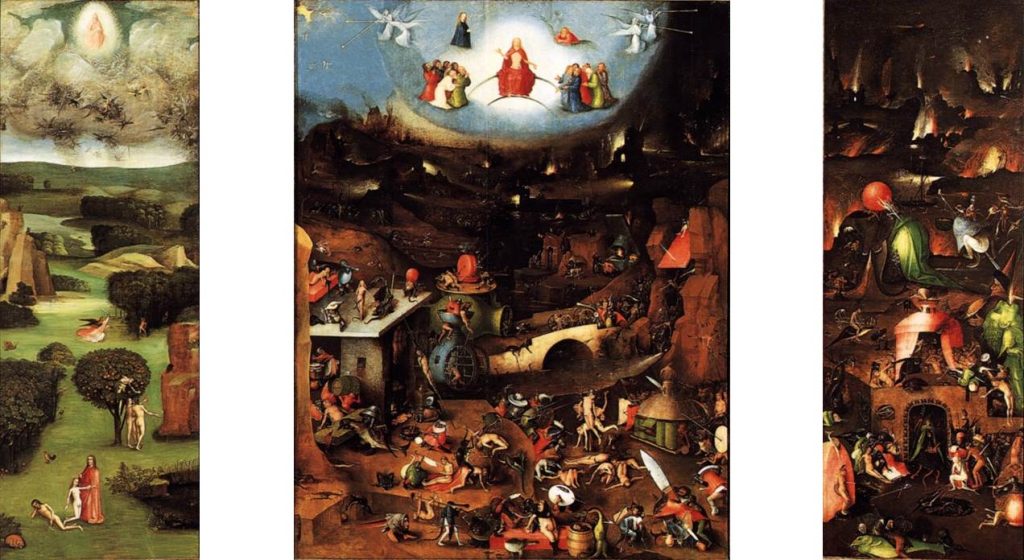
Adoration of the Magi is an oil on panel painted in 1499 the Museum of Art in Philadelphia.
Visions of Hereafter is a polyptych painted between 1505-15015. This painting is an oil on wood. It is located in the palazzo Grimaldi in Venice (Italy).
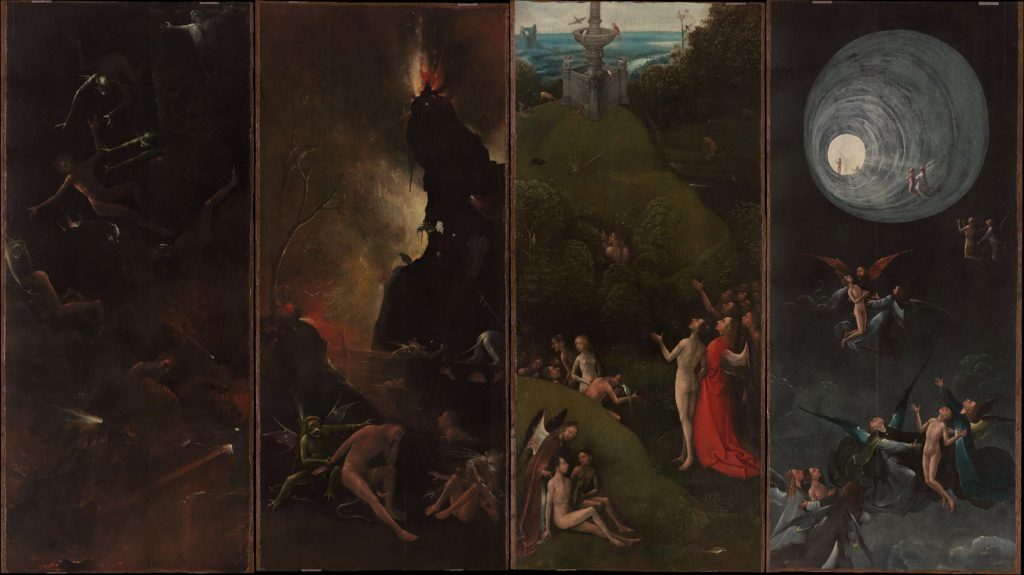
Elements presents on his paintings
Comparison on two paintings
The Garden of Earthly Delights and Visions of Hereafter have both a reference to religion. In the first painting, there are three paintings in one whereas in the second, there are four paintings in one.
In The Garden of Earthly Delights, there are a lot of characters and animals and more details than in Visions of Hereafter.
In the first painting, we have a feeling of security ; in the second, we have of feeling of confinement.
More bright colors are used in The Garden of Earthly Delights. Red, blue and brown are more used in Visions of Hereafter.
In the first one, we are still in Earth. The second one represents Hell and Paradise.
The first part of The Garden of Earthly Delights represents the metting between Adam and Eve. In the second part, we can see fruits, foutains and characters ; some of them have a fruit for head. The third part is darker and represents Hell.
This painting describes the fate of humanity caused by pleasure which conducts them to Hell.
The four parts of Visions of Hereafter have a name : « The River of Hell », « The Fall of the Damned », « The Garden of Eden » and « The Ascent of the Blessed ».
The two first ones are the road to Hell. We can see humans who are thrown on a cliff and some demons who make humans fall on a river.
The two last one are the road to Heaven. We can see a park with four groups of people all naked and a tunnel with angels who conduct dead humans to Paradise.
A society’s criticism by his paintings ?
During this period, people are haunted by the Inquisition and burned (mostly witches and alchimists).
Hieronyms Bosch is a catholic but all the humanity is bad for him. The representation of Hell is important in his paintings.
The Garden of Earthly Delights and Visions of Hereafter describes some people’s behaviors caused by pleasure which conduct them to Hell.
For this reason, his paintings are worrying the catholic religion and the priests try to discredit him. There are rumors on his heresy and his appartenance in secret societies.
After Hieronymus Bosch
Experts think that these two paintings were painted by Hieronymus Bosch but it is not the case for the second one. It was realised too late for that Hieronymus could be the author.
Hieronymus Bosch had an influence on Netherland painting and in particular on Brueghel’s painting.
He is forgotten during four centuries and his artworks are rediscovered in 20th century. He has influenced a lot the surrealistes’ movement.
Conclusion : a book about Hieronymus Bosch
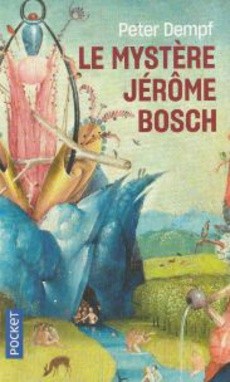
2013, Prado Museum. A priest is persuaded that The Garden of Earthly Deligths hides something and decided to destroy the painting to reveal his secret.
1510 : Petronius Oris comes to Den Bosch in Netherlands to work with Hieronymus Bosch. He discovers that his master works on a mysterious triptyc.
In this book, past and present are connected.
Photos’ credit
- The Garden of Earthly Delights : https://commons.wikimedia.org/w/index.php?curid=45147809 ;
- The Last Judgment : https://commons.wikimedia.org/w/index.php?curid=4592328 ;
- Adoration of the Magi : https://commons.wikimedia.org/w/index.php?curid=23754785 ;
- Visions of the Hereafter : https://eclecticlightdotcom.files.wordpress.com/2016/07/boschvisionshereafter.jpg ;
- Christ Carrying the Cross : https://commons.wikimedia.org/w/index.php?curid=15451710 ;
- Christ Carrying the Cross, by a follower of Hieronymus Bosch : https://commons.wikimedia.org/w/index.php?curid=7318245 ;
- For The Mistery Hieronymus Bosch by Peter Dench : https://quaideslivres.fr/livres-d-occasion/livre-de-poche/le-mystere-jerome-bosch-peter-dempf-60830
Text’ credit
- Website Rivage de Bohème : https://www.rivagedeboheme.fr/pages/arts/peinture-15-16e-siecles/jerome-bosch.html
- Website Les beaux-arts, « Grande rétrospective Jérôme Bosch : pourquoi le Prado ne prêtera pas le Jardin des Délices » : https://www.beauxarts.com/expos/retro-de-bosch-pourquoi-le-prado-ne-pretera-pas-le-jardin-des-delices/
- Website Histoire de l’art, « Bosch (Jérôme) » : http://www.histoiredelart.net/artistes/bosch-jerome-85.html
- Website Nos pensées, « Jérôme Bosch : biographie d’une énigme » https://nospensees.fr/jerome-bosch-biographie-dune-enigme/
- Website Taschen, « Jérôme Bosch, l’inventeur des monstres et des chimères » https://www.taschen.com/pages/fr/search/j%C3%A9r%C3%B4me-bosch
- Website Artsy : https://www.artsy.net/series/stories-10-art-historys-iconic-works/artsy-editorial-decoding-boschs-wild-whimsical-garden-earthly-delights
- Website The Eclectic Light Company : https://eclecticlight.co/2016/07/31/hieronymus-bosch-visions-of-the-hereafter-venice/
- Website Babelio for the summary of The Mistery Hieronymus Bosch : https://www.babelio.com/livres/Dempf-Le-mystere-Jerome-Bosch/979441

